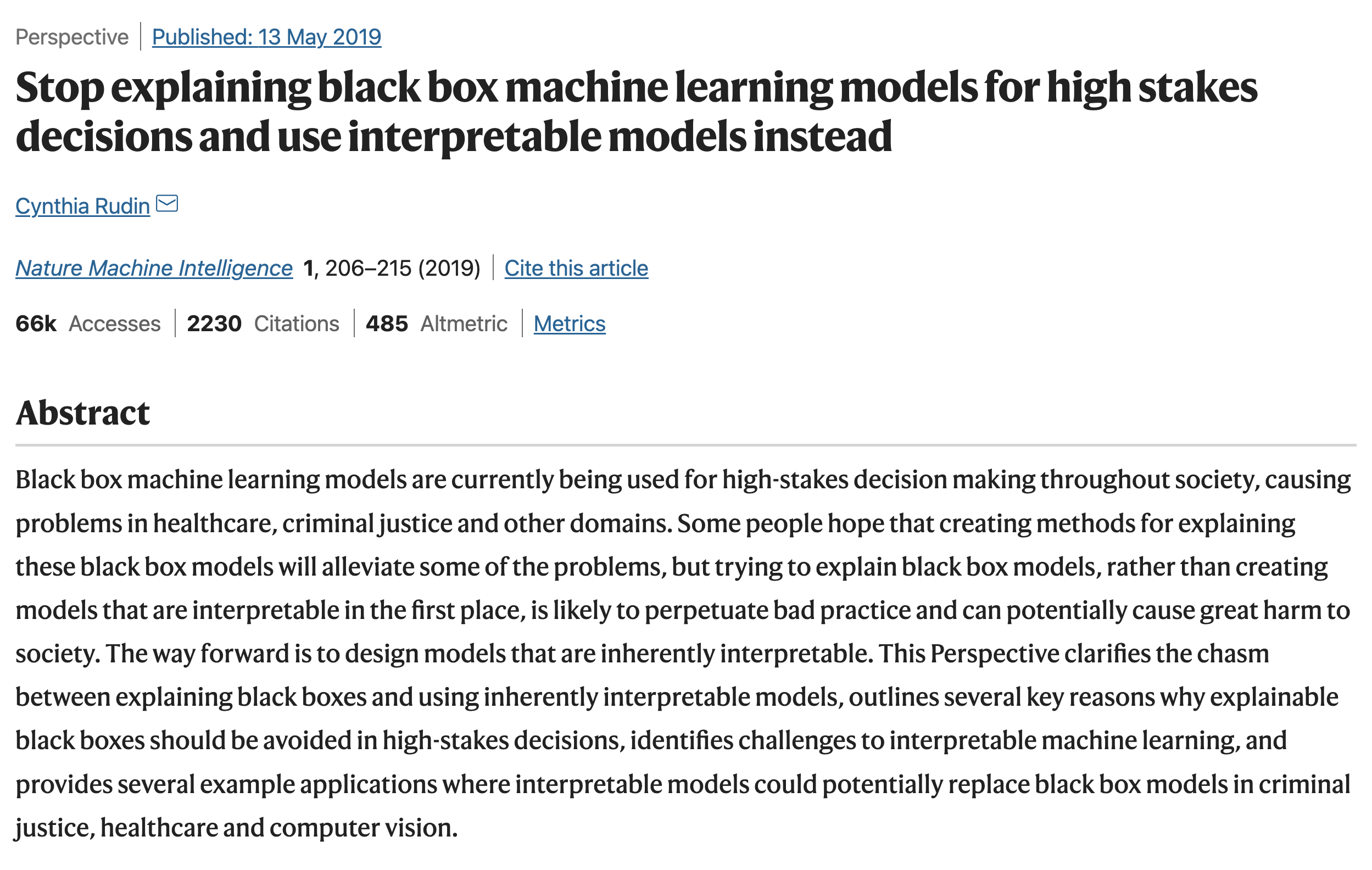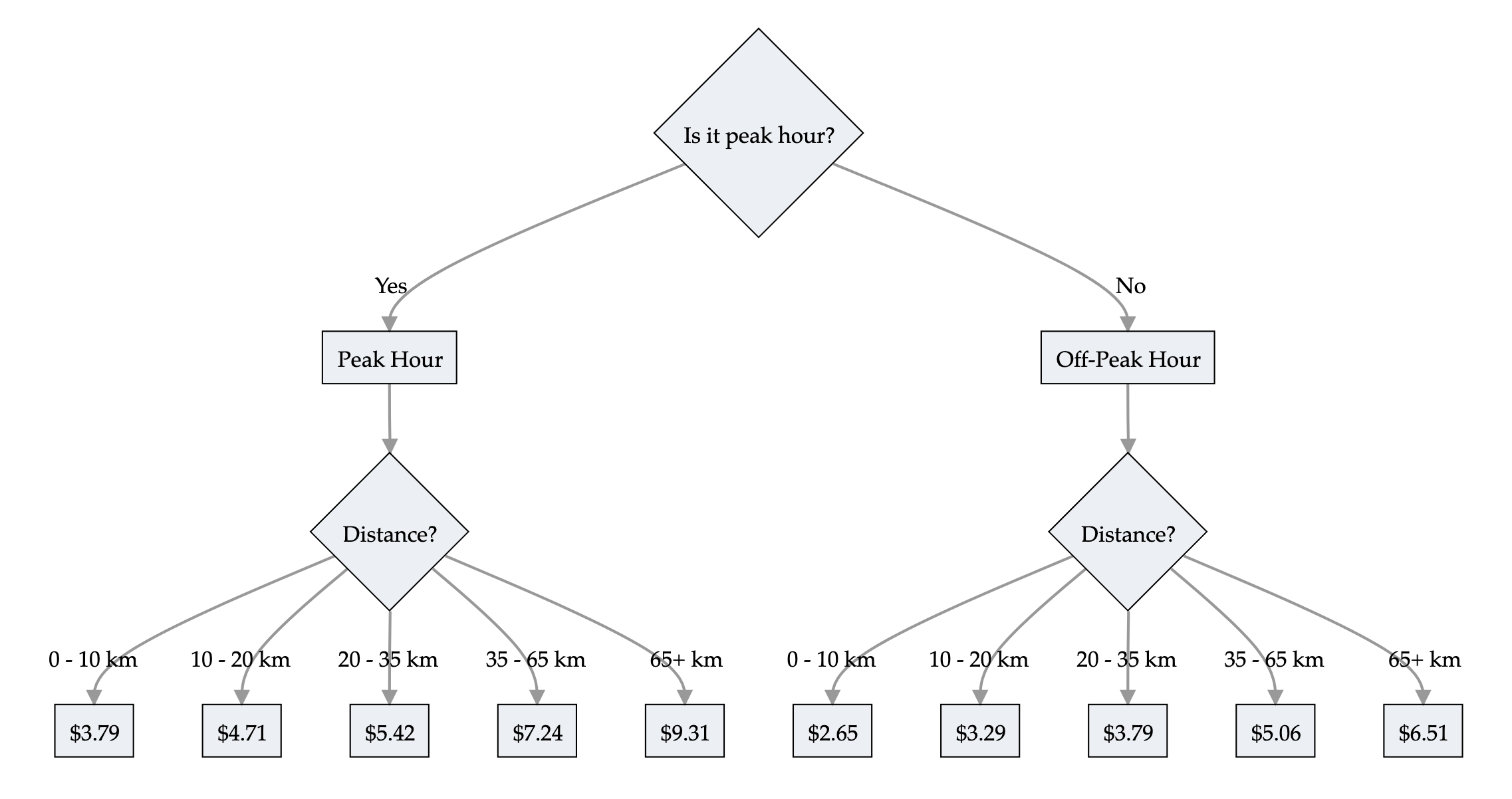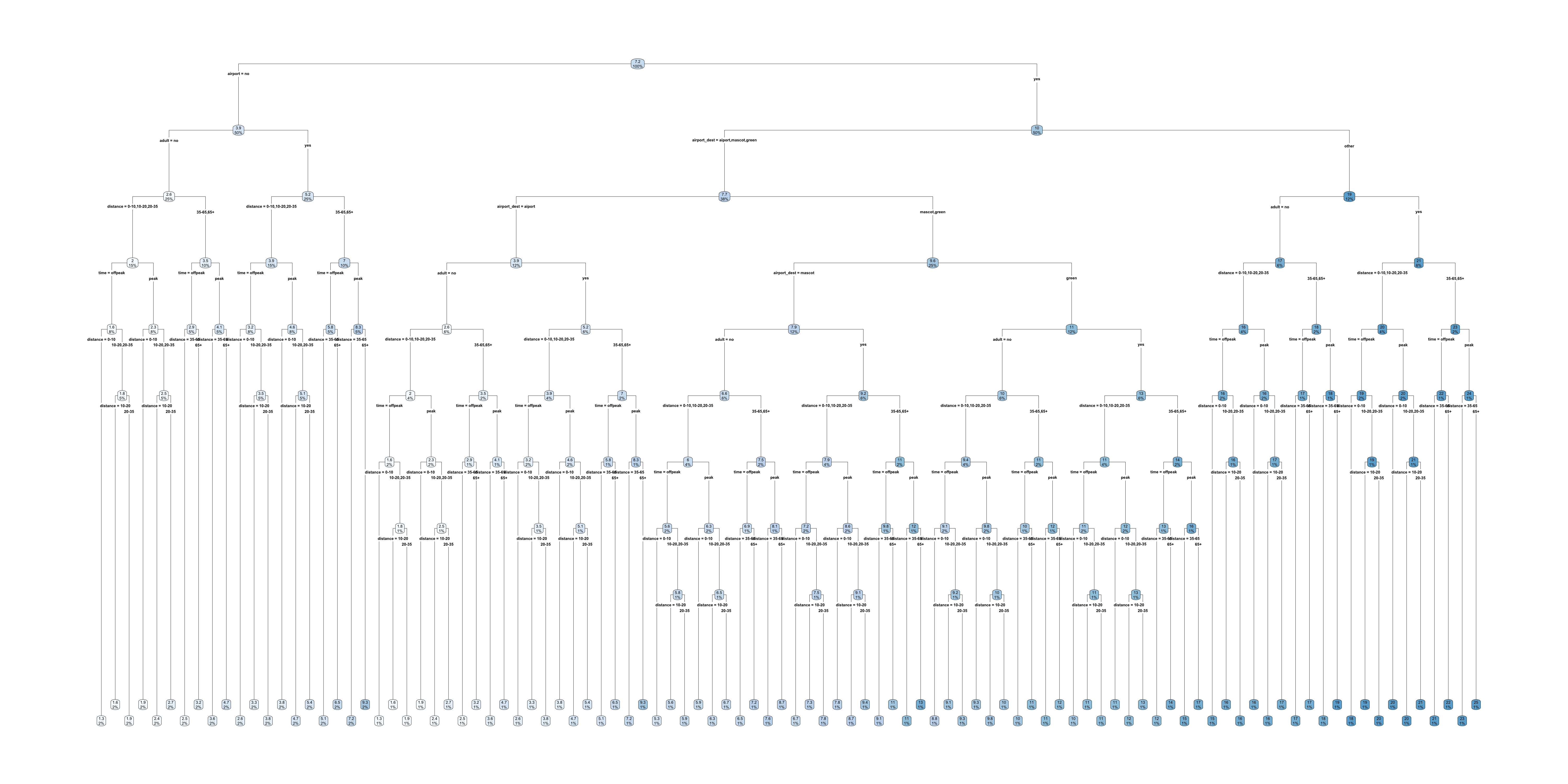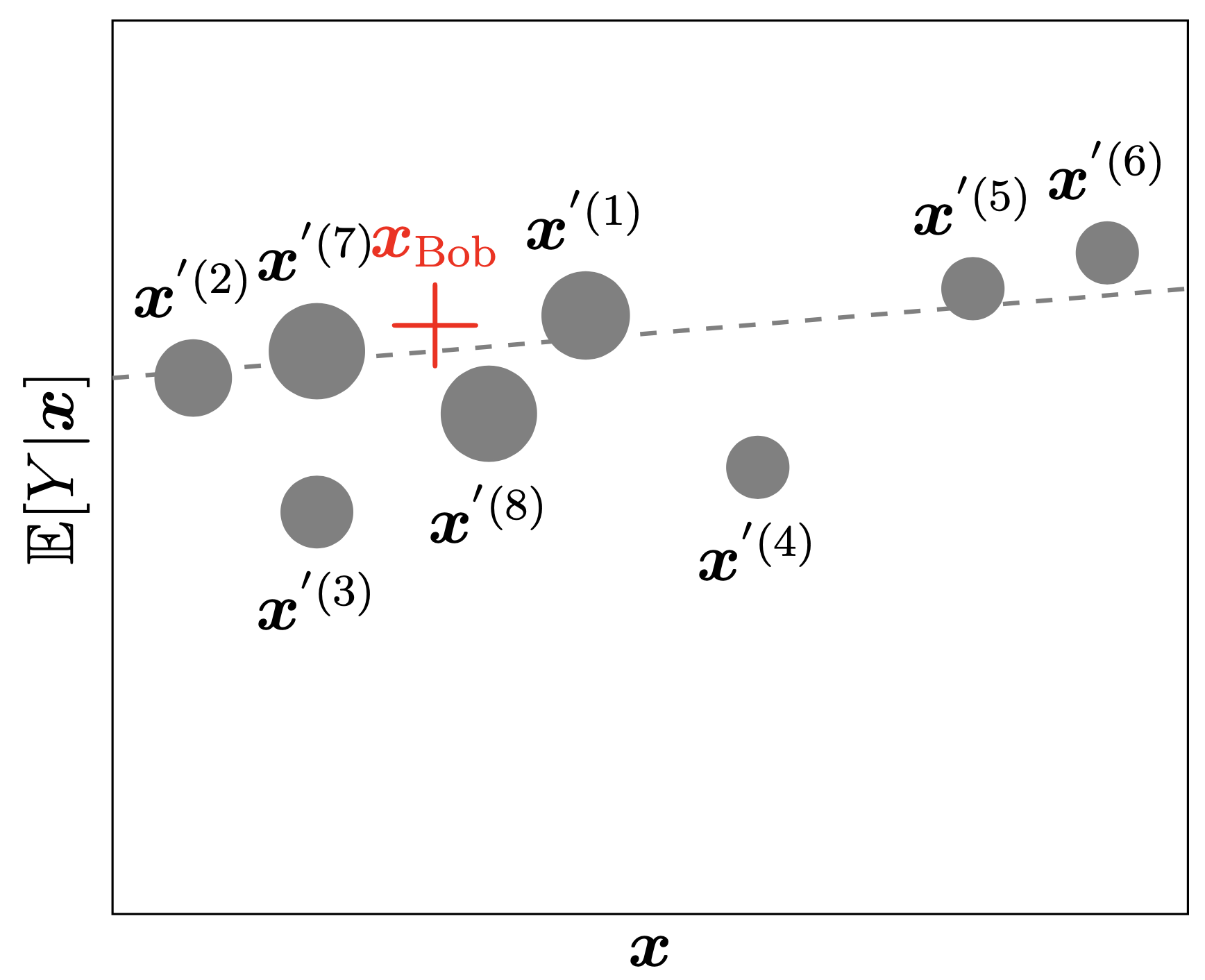Show the package imports
import random
import matplotlib.pyplot as plt
import numpy as np
import numpy.random as rndACTL3143 & ACTL5111 Deep Learning for Actuaries
import random
import matplotlib.pyplot as plt
import numpy as np
import numpy.random as rndInterpretability on a high-level refers to understanding how a model works. Understanding how a model works is very important for decision making. Traditional statistical methods like linear regression and generalized linear regressions are inherently interpretable because we can see and understand how different variables impact the model predictions collectively and individually. In contrast, deep learning algorithms do not readily provide insights into how variables contributed to the predictions. They are composed of multiple layers of interconnected nodes that learn different representations of data. Hence, it is not clear how inputs directly contributed to the outputs. This makes neural networks less interpretable. This is not very desirable, especially in situations which demand making explanations. As such, there is active discussion going on about how we can make less interpretable models more interpretable so that we start trusting these models more.
Suppose a neural network informs us to increase the premium for Bob.
We need to trust the model to employ it! With interpretability, we can trust it!
Interpretability refers to the ease with which one can understand and comprehend the model’s algorithm and predictions.
Interpretability of black-box models can be crucial to ascertaining trust.
The model is interpretable by design.
Models with inherent interpretability generally have a simple model architecture where the relationships between inputs and outputs are straightforward. This makes it easy to understand and comprehend model’s inner workings and its predictions. As a result, decision making processes convenient. Examples for models with inherent interpretability include linear regression models, generalized linear regression models and decision trees.
The model is not interpretable by design, but we can use other methods to explain the model.
Post-hoc interpretability refers to applying various techniques to understand how the model makes its predictions after the model is trained. Post-hoc interpretability is useful for understanding predictions coming from complex models (less interpretable models) such as neural networks, random forests and gradient boosting trees.
Global Interpretability:
Global Interpretability focuses on understanding the model’s decision-making process as a whole. Global interpretability takes in to account the entire dataset. These techniques will try to look at general patterns related how input data drives the output in general. Examples for techniques include global feature importance method and permutation importance methods.
Local Interpretability:
Local Interpretability focuses on understanding the model’s decision-making for a specific input observation. These techniques will try to look at how different input features contributed to the output.



A GLM has the form
\hat{y} = g^{-1}\bigl( \beta_0 + \beta_1 x_1 + \dots + \beta_p x_p \bigr)
where \beta_0, \dots, \beta_p are the model parameters.
Global & local interpretations are easy to obtain.
The above GLM representation provides a clear interpretation of how a marginal change in a variable x can contribute to a change in the mean of the output. This makes GLM inherently interpretable.
Imagine: \hat{y_i} = g^{-1}\bigl( \beta_0(\boldsymbol{x}_i) + \beta_1(\boldsymbol{x}_i) x_{i1} + \dots + \beta_p(\boldsymbol{x}_i) x_{ip} \bigr)
A GLM with local parameters \beta_0(\boldsymbol{x}_i), \dots, \beta_p(\boldsymbol{x}_i) for each observation \boldsymbol{x}_i.
The local parameters are the output of a neural network.
Here, \beta_p’s are the neurons from the output layer. First, we define a Feed Foward Neural Network using an input layer, several hidden layers and an output layer. The number of neurons in the output layer must be equal to the number of inputs. Thereafter, we define a skip connection from the input layer directly to the output layer, and merge them using scaler multiplication. Thereafter, the neural network returns the coefficients of the GLM fitted for each individual. We then train the model with the response variable.
Inputs: fitted model m, tabular dataset D.
Compute the reference score s of the model m on data D (for instance the accuracy for a classifier or the R^2 for a regressor).
For each feature j (column of D):
For each repetition k in {1, \dots, K}:
Compute importance i_j for feature f_j defined as:
i_j = s - \frac{1}{K} \sum_{k=1}^{K} s_{k,j}
def permutation_test(model, X, y, num_reps=1, seed=42):
"""
Run the permutation test for variable importance.
Returns matrix of shape (X.shape[1], len(model.evaluate(X, y))).
"""
rnd.seed(seed)
scores = []
for j in range(X.shape[1]):
original_column = np.copy(X[:, j])
col_scores = []
for r in range(num_reps):
rnd.shuffle(X[:,j])
col_scores.append(model.evaluate(X, y, verbose=0))
scores.append(np.mean(col_scores, axis=0))
X[:,j] = original_column
return np.array(scores)Local Interpretable Model-agnostic Explanations employs an interpretable surrogate model to explain locally how the black-box model makes predictions for individual instances.
E.g. a black-box model predicts Bob’s premium as the highest among all policyholders. LIME uses an interpretable model (a linear regression) to explain how Bob’s features influence the black-box model’s prediction.
The interpretable model’s explanations accurately reflect the behaviour of the black-box model across the entire input space.
The interpretable model’s explanations accurately reflect the behaviour of the black-box model for a specific instance.
LIME aims to construct an interpretable model that mimics the black-box model’s behaviour in a locally faithful manner.
Suppose we want to explain the instance \boldsymbol{x}_{\text{Bob}}=(1, 2, 0.5).

The bold red cross is the instance being explained. LIME samples instances (grey nodes), gets predictions using f (gamma MDN) and weighs them by the proximity to the instance being explained (represented here by size). The dashed line g is the learned local explanation.
The SHapley Additive exPlanations (SHAP) value helps to quantify the contribution of each feature to the prediction for a specific instance.
The SHAP value for the jth feature is defined as \begin{align*} \text{SHAP}^{(j)}(\boldsymbol{x}) &= \sum_{U\subset \{1, ..., p\} \backslash \{j\}} \frac{1}{p} \binom{p-1}{|U|}^{-1} \big(\mathbb{E}[Y| \boldsymbol{x}^{(U\cup \{j\})}] - \mathbb{E}[Y|\boldsymbol{x}^{(U)}]\big), \end{align*} where p is the number of features. A positive SHAP value indicates that the variable increases the prediction value.


from watermark import watermark
print(watermark(python=True, packages="keras,matplotlib,numpy,pandas,seaborn,scipy,torch,tensorflow,tf_keras"))Python implementation: CPython
Python version : 3.11.8
IPython version : 8.23.0
keras : 3.2.0
matplotlib: 3.8.4
numpy : 1.26.4
pandas : 2.2.1
seaborn : 0.13.2
scipy : 1.11.0
torch : 2.2.2
tensorflow: 2.16.1
tf_keras : 2.16.0